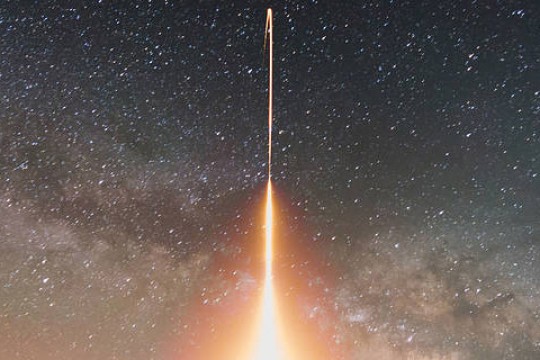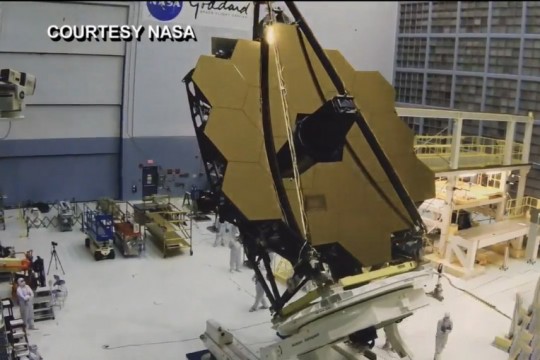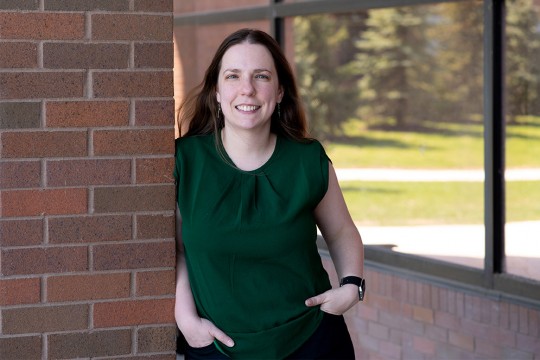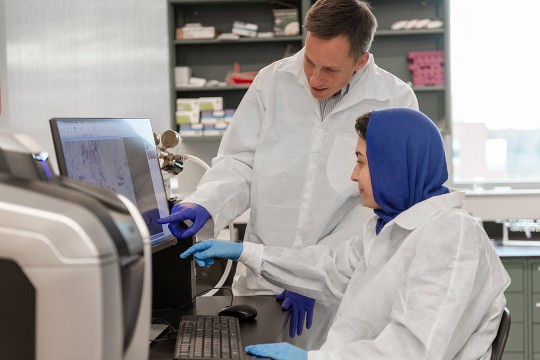News
School of Physics and Astronomy
-
July 2, 2021

NSF renews funding for RIT to help detect and characterize low-frequency gravitational waves
The National Science Foundation renewed its support of the North American Nanohertz Observatory for Gravitational Waves (NANOGrav) with a $17 million grant over five years to operate the NANOGrav Physics Frontiers Center (PFC). RIT will receive $703,000 over the next five years to contribute research to the NANOGrav PFC.
-
June 17, 2021

CIBER-2 experiment successfully completes first flight
Led by principal investigator Michael Zemcov, an assistant professor in RIT’s School of Physics and Astronomy and Center for Detectors, the experiment aims to better understand extragalactic background light, which traces the history of galaxies back to the formation of the first stars in the universe.
-
June 3, 2021

Rocket Team to Discern if Our Star Count Should Go Way Up
NASA talks to Michael Zemcov, assistant professor of physics and astronomy, about the amount of light in space coming from outside of galaxies.
-
May 21, 2021

Someone You Should Know: Jeyhan Kartaltepe
WHAM-TV features Jeyhan Kartaltepe, assistant professor in the School of Physics and Astronomy
-
May 12, 2021

RIT Outstanding Graduate Woman Achievement Award highlights Graduate Student Advisory Council leaders
RIT students Emily Wilson and Teresa Symons are co-recipients of the Outstanding Graduate Woman Achievement Award for their dedication and leadership on RIT’s Graduate Student Advisory Council. Wilson and Symons are Ph.D. students in the astrophysical sciences and technology program in the School of Physics and Astronomy and co-chairs of the Graduate Student Advisory Council.
-
April 21, 2021

Black hole Nobel Prize winner Andrea Ghez is RIT’s 2021 commencement speaker
Andrea Ghez, a 2020 Nobel Prize winner in physics for her research in discovering one of the most exotic phenomena in the universe—the supermassive black hole at the center of our galaxy—will be a 2021 RIT commencement speaker on May 14 and 15. Ghez joins Eric Avar ’90 (industrial design), Nike’s vice president and creative guide of innovation design who was honored with the College of Art and Design Distinguished Alumni Award in 2016, as the university’s first-ever dual commencement speakers.
-
April 19, 2021

James Webb Space Telescope program aims to map the earliest structures of the universe
When the James Webb Space Telescope—the long-awaited successor to the Hubble Space Telescope—becomes operational in 2022, one of its first orders of business will be mapping the earliest structures of the universe. A team of nearly 50 researchers led by principal investigator Jeyhan Kartaltepe and other scientists at RIT and University of Texas at Austin will attempt to do so.
-
April 9, 2021

The James Webb Space Telescope’s First Year of Extraordinary Science Has Been Revealed
Scientific American talks to Jeyhan Kartaltepe, assistant professor in the School of Physics and Astronomy, about the program she is leading to use the James Webb Space Telescope to study thousands of the earliest galaxies in the universe.
-
March 30, 2021

‘U.S. News’ Best Graduate Schools highlight RIT graduate programs
RIT graduate programs are among the best in the nation, according to the U.S. News & World Report annual statistical survey of graduate programs.
-
March 28, 2021

RIT to develop new solar technology
WROC-TV talks to Seth Hubbard, professor of physics, about developing low-cost, high-efficiency solar cells.
-
March 19, 2021

College of Liberal Arts honors students for writing excellence
RIT's College of Liberal Arts honored student achievements in writing with 15 writing awards on Friday, March 19. This year marks the 41st year the awards were presented, though the first time the ceremony was held virtually.
-
March 5, 2021

RIT’s Pratik Dholabhai earns NSF CAREER Award to study materials in solid oxide fuel cells
Assistant Professor Pratik Dholabhai from RIT’s School of Physics and Astronomy received an NSF Faculty Early Career Development (CAREER) award and grant for his five-year project to conduct fundamental physics research on complex materials in solid oxide fuel cells.




